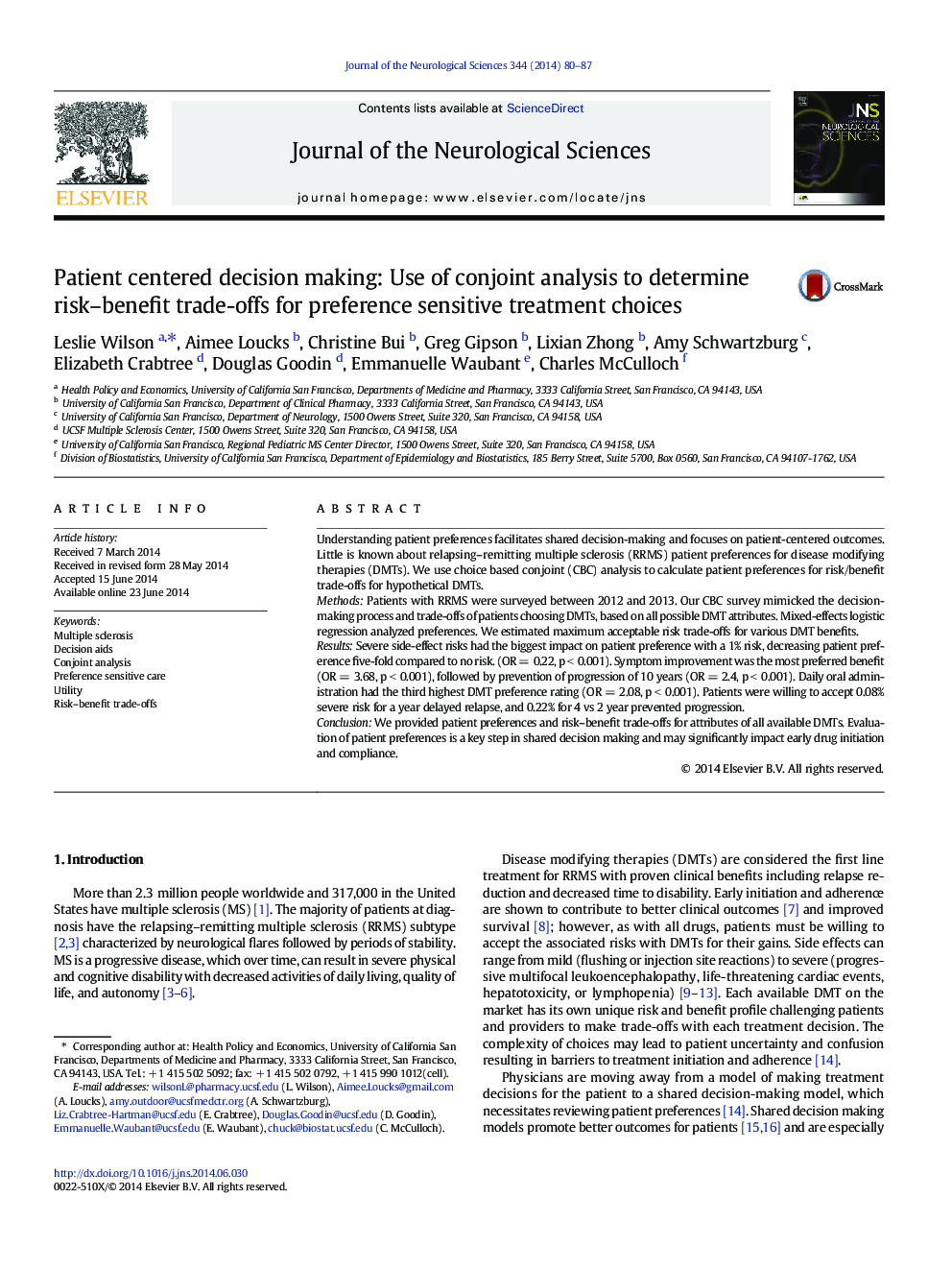| کد مقاله | کد نشریه | سال انتشار | مقاله انگلیسی | نسخه تمام متن |
|---|---|---|---|---|
| 1913530 | 1535118 | 2014 | 8 صفحه PDF | دانلود رایگان |
• Patients are willing to accept 1% risk of death/disability for substantial benefit.
• Patients are willing to accept 0.2% severe risk for 4 year prevented progression.
• Acceptable risks are higher than actual risks likely with use of DMT's.
• Severe risks and symptom improvement were most important attributes in DMT choice.
• Delays in relapse were least important despite being a major DMT outcome.
Understanding patient preferences facilitates shared decision-making and focuses on patient-centered outcomes. Little is known about relapsing–remitting multiple sclerosis (RRMS) patient preferences for disease modifying therapies (DMTs). We use choice based conjoint (CBC) analysis to calculate patient preferences for risk/benefit trade-offs for hypothetical DMTs.MethodsPatients with RRMS were surveyed between 2012 and 2013. Our CBC survey mimicked the decision-making process and trade-offs of patients choosing DMTs, based on all possible DMT attributes. Mixed-effects logistic regression analyzed preferences. We estimated maximum acceptable risk trade-offs for various DMT benefits.ResultsSevere side-effect risks had the biggest impact on patient preference with a 1% risk, decreasing patient preference five-fold compared to no risk. (OR = 0.22, p < 0.001). Symptom improvement was the most preferred benefit (OR = 3.68, p < 0.001), followed by prevention of progression of 10 years (OR = 2.4, p < 0.001). Daily oral administration had the third highest DMT preference rating (OR = 2.08, p < 0.001). Patients were willing to accept 0.08% severe risk for a year delayed relapse, and 0.22% for 4 vs 2 year prevented progression.ConclusionWe provided patient preferences and risk–benefit trade-offs for attributes of all available DMTs. Evaluation of patient preferences is a key step in shared decision making and may significantly impact early drug initiation and compliance.
Journal: Journal of the Neurological Sciences - Volume 344, Issues 1–2, 15 September 2014, Pages 80–87
